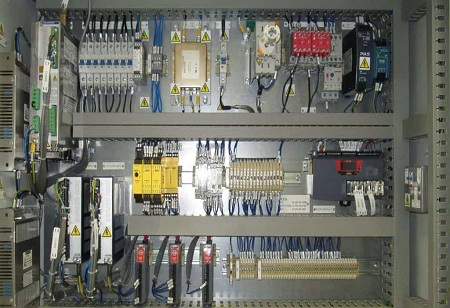The rising demand for factory automation and an increase in need for equipment safety is driving the
electrical control panel market growth. Moreover, the proliferation in new industries and machinery has driven the installation of an electric control panel for offices, warehouses, workshops, etc. This factor is likely to propel the growth of the electric control panel market. A rise in
Research & Development investment to increase the electrical system efficiency is expected to offer productive growth opportunities for the global electric control panel market in the coming years.
There is a general belief that the Indian power sector has been characterized by power-cuts, economic losses, system inefficiencies and out-dated last mile networks. While the sector has been undergoing a renovation in the recent times, the coronavirus pandemic emphasized the need of accelerated technological upgradation. Here on, the focus on implementation of smart technologies like an evolved grid system, smart metering, digital asset management will help transform the seemingly traditional, manpower-heavy sector into a smarter, more efficient power system with each element in the value chain re-imagining their processes and focusing more on infrastructure.
Evolving control panel size
One of the biggest differences in how control panels are manufactured today is how much smaller all of the components are. Regardless of market, real estate is a finite resource and the size of a panel affects how much room is left in a plant for production. All of the components have been getting smaller, but most notably the brains of the panels, the PLCs (programmable logic controller), have decreased in size.
Initially, the most popular PLC, The Allen-Bradley PLC-5, was 2.5’ tall. Today, ControlLogix, MicroLogix, and CompactLogix PLCs are about a quarter of the size, freeing up a lot of room inside the panel. Overall, what used to fit in a five-door control panel can now fit into a three or four door panel and this is a trend that’s going to continue.
Improved control panel efficiency
Control panels today are a lot more energy efficient than they were twenty years ago. Electrical components are becoming much more efficient as technology becomes better. This efficiency is allowing components to run cooler with less energy loss, therefore less heat being released from the components. The manufacturers are now following specified air spacing requirements around components, allowing them to properly dissipate heat.
Twenty years ago, most panels were controlled with AC power and now it’s DC power. This shift in control voltage means different power consumption. When the power coming into the panel is used more efficiently, the components give off less heat and can then be placed closer together as per the safety ratings. Closer components also contribute to the smaller footprint of panels compared with earlier.
Increase in the safety of the control panels
Control panel safety has come a long way. The major increases in safety have resulted from control voltages dropping to 24VDC as well as 95% of components being manufactured “finger safe”.
